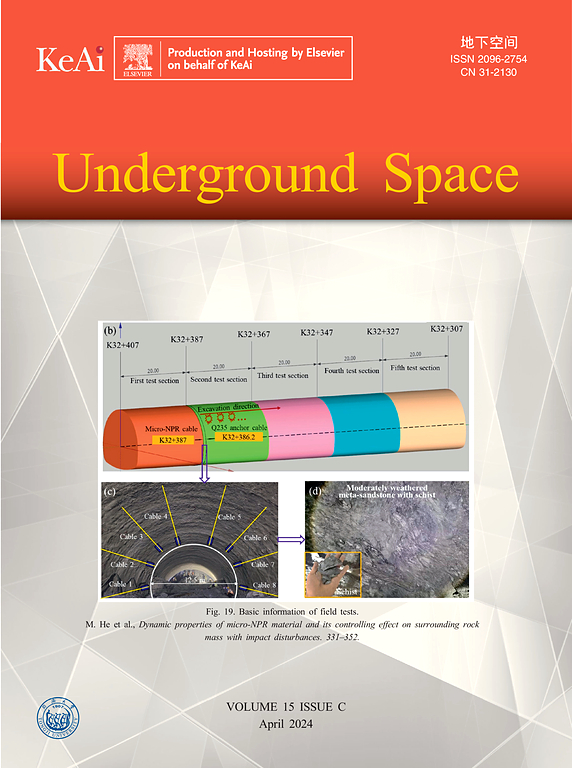Machine learning and FEM-driven analysis and optimization of deep foundation pits in coastal area: A case study in Fuzhou soft ground
IF 8.3
1区 工程技术
Q1 ENGINEERING, CIVIL
引用次数: 0
Abstract
To comply with the requirements of sustainable energy development, China has proposed the strategic goal of achieving dual carbon. Systematic and scientific development and utilization of urban underground space will provide critical support for reducing carbon emissions and enhancing carbon sink capacity. This paper examines the transmission and distribution ring pit project of Fuzhou Binhai New City, China, divided into four regions, where the selection of the support system is determined by the project’s characteristics. Stability is analyzed using in-situ monitoring data from the R4 area, and the deformation of the support system is predicted using machine learning. The predicted maximum lateral deformation of the support system may reach the warning value, necessitating corrections to the existing support parameters. On this basis, the deformation during foundation pit excavation is simulated, and the effects of key factors such as pile geometric parameters, pile penetration depth, and anchor cable insertion ratio on the deformation are analyzed. The study shows that pile deformation control is optimal when the support parameters include a 1.3 insertion ratio, a 20° anchor cable angle, and a 200 kN prestressing force, enabling the construction of the remaining three areas. This study can serve as a valuable reference for the design and analysis of deep foundation pits under special stratigraphic conditions in coastal areas.
沿海地区深基坑机器学习与有限元驱动分析与优化——以福州软土地基为例
为适应能源可持续发展的要求,中国提出了实现双碳的战略目标。系统、科学地开发利用城市地下空间,将为减少碳排放、增强碳汇能力提供重要支撑。本文以福州滨海新城输配电环坑工程为研究对象,将其划分为四个区域,根据项目特点确定了支撑系统的选择。利用R4区域的现场监测数据分析了支护系统的稳定性,并利用机器学习预测了支护系统的变形。预测支护系统的最大侧向变形可能达到警戒值,需要对现有支护参数进行修正。在此基础上,对基坑开挖过程中的变形进行了模拟,分析了桩几何参数、桩侵深、锚索插入比等关键因素对变形的影响。研究表明,当支护参数为1.3插入比、20°锚索角、200 kN预应力时,桩身变形控制最优,其余三个区域均可施工。本研究可为沿海地区特殊地层条件下的深基坑设计与分析提供有价值的参考。
本文章由计算机程序翻译,如有差异,请以英文原文为准。
求助全文
约1分钟内获得全文
求助全文
来源期刊

Underground Space
ENGINEERING, CIVIL-
CiteScore
10.20
自引率
14.10%
发文量
71
审稿时长
63 days
期刊介绍:
Underground Space is an open access international journal without article processing charges (APC) committed to serving as a scientific forum for researchers and practitioners in the field of underground engineering. The journal welcomes manuscripts that deal with original theories, methods, technologies, and important applications throughout the life-cycle of underground projects, including planning, design, operation and maintenance, disaster prevention, and demolition. The journal is particularly interested in manuscripts related to the latest development of smart underground engineering from the perspectives of resilience, resources saving, environmental friendliness, humanity, and artificial intelligence. The manuscripts are expected to have significant innovation and potential impact in the field of underground engineering, and should have clear association with or application in underground projects.
 求助内容:
求助内容: 应助结果提醒方式:
应助结果提醒方式:


